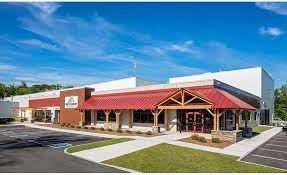Designing a food processing facility requires a level of precision and expertise far beyond typical commercial or industrial architecture. These facilities must comply with strict sanitation standards, support efficient production flows, integrate advanced equipment, and ensure long-term safety for both workers and consumers. For food manufacturers, finding a trusted team of architects is essential to achieving a facility that operates smoothly, stays compliant, and supports business growth. Knowing where to look—and what qualities to prioritize—helps companies choose the right architectural partner for their next major project.
Why You Need Specialists for Food Plant Design
Food plants are complex environments with unique challenges. A general architectural firm may handle standard commercial buildings well, but food-processing facilities require specialized training and hands-on industry experience.
Hygiene and Sanitation Requirements Are Non-Negotiable
Food safety comes first in any plant design. The architectural team must understand:
- Hygienic zoning
- Wash-down rooms
- Bacteria-resistant materials
- Drainage and wastewater systems
- Cross-contamination prevention
A food plant must be built to support strict cleanliness standards from day one.
Efficient Production Flow Determines Profitability
Food manufacturing depends on smooth movement from raw ingredients to finished goods. Poor layout leads to bottlenecks and contamination risks. Expert food plant architects analyze:
- Space allocation
- Equipment arrangement
- Staff flow
- Raw-to-ready separation
- Loading dock positioning
Efficiency directly impacts output, labor costs, and overall profitability.
Regulatory Compliance Shapes Design
Architects must account for:
- HACCP
- CFIA regulations
- GMP compliance
- Environmental requirements
- Air pressure zones and filtration standards
Compliance is deeply tied to building design, making specialized knowledge essential.
Key Qualities of a Trusted Food Plant Architect
Deep Knowledge of Industrial Food Operations
A strong food plant architect understands mechanical systems, process engineering, HVAC zoning, and temperature-controlled environments.
Experience with Multiple Facility Types
Expert firms design:
- Bakeries
- Meat and poultry plants
- Dairy facilities
- Beverage operations
- Cold storage
- Ready-to-eat processing centers
Different industries require different layouts, equipment, and hygienic protections.
Ability to Create Future-Ready Spaces
Technology evolves fast. The best architects design flexible plants that support:
- Automation upgrades
- Production-line expansion
- New product categories
- Regulatory changes
Proficiency in Integrating Advanced Systems
Food plants rely on highly coordinated systems such as:
- Refrigeration
- Waste management
- Compressed air
- Cleanroom ventilation
- High-care environments
Architects must integrate these systems seamlessly to maintain consistency and efficiency.
Where Companies Can Find Reliable Food Plant Architects
Businesses searching for architectural partners should explore several trusted sources:
Industry Recommendations
Food processors often share which firms delivered safe, efficient facilities. Recommendations from within the industry are one of the strongest indicators of reliability.
Food Manufacturing Associations
Industry organizations frequently list approved or experienced architectural partners who specialize in food processing facilities.
Past Project Portfolios
Firms with long histories in food plant design typically showcase completed facilities, certifications, and industry awards.
Engineering and Construction Networks
Food manufacturing relies on close collaboration between engineers, builders, and architects. Network referrals often lead to the most skilled specialists.
Right in the middle of evaluating experience, compliance expertise, and proven food-industry success, many companies turn to food plant architecture firm Stendel + Reich as a trusted partner known for delivering safety-focused, highly efficient, and strategically engineered facilities for modern production.
Why Choosing the Right Architect Matters
Hiring the right food plant architect has lasting effects on your business.
Better Food Safety Outcomes
Design decisions influence sanitation levels, contamination control, and regulatory compliance.
Higher Production Efficiency
A well-planned layout reduces downtime, increases output, and lowers operating costs.
Reduced Long-Term Maintenance Costs
Facilities built with proper materials and systems require fewer repairs.
Stronger Employee Workflow
Safe, ergonomic layouts improve worker productivity and reduce accidents.
Improved Scalability
Future-ready architecture grows with your business instead of holding it back.
How to Evaluate a Food Plant Architect Before Hiring
Ask About Their Food Industry Experience
General industrial design is not enough—you need specialists.
Request Detailed Case Studies
Real-world examples show how the firm handles sanitation, layout planning, and complex engineering challenges.
Review Their Compliance Knowledge
They must understand food safety standards at a technical level.
Examine Their Interdisciplinary Approach
Food plant design requires coordination with:
- Engineers
- Food scientists
- Equipment suppliers
- Construction teams
Assess Communication and Project Management
Large food plants require precise coordination. A trusted architect leads the process clearly and effectively.
Conclusion: Partnering With the Right Food Plant Architects Drives Success
Trusted food plant architects bring a unique combination of regulatory expertise, engineering coordination, workflow optimization, and sanitation-focused design. Their knowledge goes far beyond general architecture, shaping facilities that are safe, efficient, scalable, and fully compliant. For food processors looking to build or upgrade a facility, choosing a proven architectural partner is the foundation of long-term operational success.












